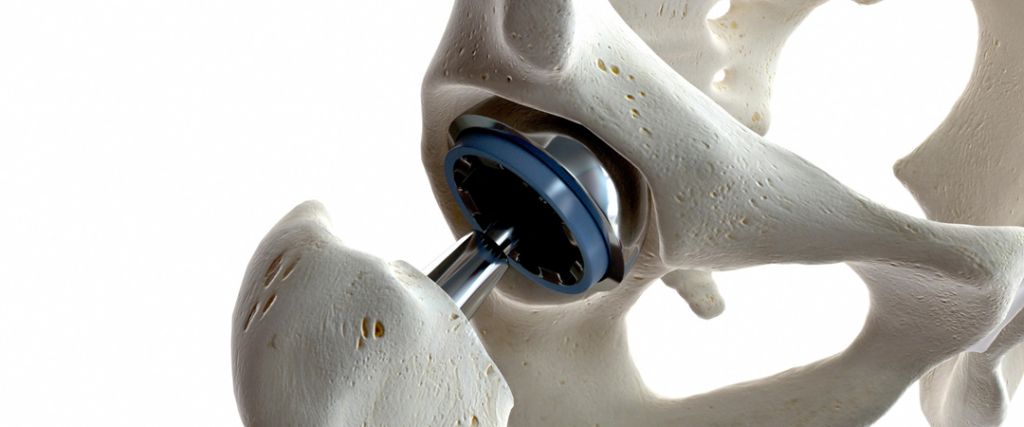
The Mediterranean Clinic is at the forefront of orthopaedic surgery, specialising in total hip replacements to ensure a fast and effective recovery for our patients. We pride ourselves on offering innovative solutions aligned with the body’s natural dynamics, ensuring improved mobility and significant pain reduction.
Conditions Treated with Total Hip Replacement
At the Mediterranean Clinic, total hip replacements are primarily used to treat severe osteoarthritis, which involves the deterioration of joint cartilage. They are also effective for conditions such as avascular necrosis of the femoral head, where a loss of blood supply leads to bone tissue death, and hip dysplasia, characterised by abnormal joint development. Hip replacements are also an option for those suffering from inflammatory rheumatism, such as rheumatoid arthritis, which causes chronic inflammation and joint damage.
Key Benefits of Our Hip Replacements
- Improved Mobility: Our implants optimise movement and restore hip function, allowing patients to resume daily activities with less pain.
- Long-Term Durability: Made with advanced materials, our prostheses are designed to last, supporting you step by step for years to come.
- Integrative Design: Each implant is crafted to mimic the natural mechanics of the hip, providing exceptional comfort and performance.
- Minimally Invasive Surgical Techniques: Our skilled surgeons employ the latest minimally invasive techniques, ensuring faster recovery and shorter hospital stays.
- Customisable Options: We understand that every patient is unique, which is why we offer customisable options to meet individual needs.
Types of Total Hip Replacements
There are several types of total hip replacements, each tailored to suit the varying needs and physical conditions of patients. Here are the main models offered by the Mediterranean Clinic:
- Ceramic-on-Ceramic Prosthesis: This type provides high wear resistance and is ideal for younger, more active patients.
- Metal-on-Metal Prosthesis: Although less commonly used today due to concerns about metal ion release, this option may still be suitable for certain patients.
- Metal-on-Polyethylene Prosthesis: A traditional type of hip prosthesis, known for its reliability and durability.
- Ceramic-on-Polyethylene Prosthesis: This combination reduces the risk of wear and is often preferred for its enhanced longevity.Each prosthesis is carefully selected following a thorough evaluation of the patient’s condition, activity levels, and specific recovery goals.

Why Opt for a Total Hip Replacement?
The decision to undergo a total hip replacement is often driven by the need to improve the patient’s quality of life. Reasons may include chronic, unbearable pain, severe joint stiffness, or a significant reduction in mobility caused by conditions such as arthritis or traumatic injuries. The procedure aims to restore joint function, allow patients to resume daily activities without pain, and prevent further joint deterioration. Total hip replacement is considered a safe and effective solution for severe joint issues, with a high success rate and long-lasting results.
Indications for a Hip Replacement
The indications for a hip replacement can vary depending on age, physical condition, and other patient-specific factors. It is crucial to discuss the potential benefits and risks with your doctor before making a decision.
What to Know Before the Procedure
Before undergoing a total hip replacement, it is important to understand the potential risks, possible complications, the recovery process, and the necessary post-operative care. Your doctor will explain how to prepare for the procedure, including any dietary or medication restrictions to follow before surgery. It is also essential to have realistic expectations about the outcomes and quality of life after the procedure.
The Implantation Process
During a total hip replacement, the damaged parts of the femur and pelvis are replaced with artificial components made of metal and plastic. The procedure can be performed either as an open surgery, involving a larger incision on the hip, or using a minimally invasive technique, which utilises smaller incisions and specialised equipment to access the joint. The choice of method will depend on the patient’s condition and the surgeon’s preference.
Post-Operative Care
After a hip replacement, following the doctor’s instructions is crucial for a smooth recovery and to minimise potential complications. This may include using a brace or crutches for a specified period, as well as following a rehabilitation programme to strengthen muscles and improve hip mobility. Activities to avoid during recovery will be discussed with your doctor, along with the expected length of hospital stay and prescribed medications to manage pain and prevent infection.
Our Commitment
At the Mediterranean Clinic, our mission is to provide exceptional care through innovative surgical practices and unparalleled patient support. We are dedicated to working collaboratively with patients and healthcare professionals to deliver life-changing, tailored solutions.
With a team of renowned orthopaedic surgeons, you can expect a patient-centred experience focused on safety, quality, and outstanding results.
If you are considering a hip replacement or are a professional seeking reliable information for your patients, contact the Mediterranean Clinic to learn how our hip replacement services can help restore mobility and improve quality of life.
For more information or to schedule an appointment, visit our website or contact our office directly.


